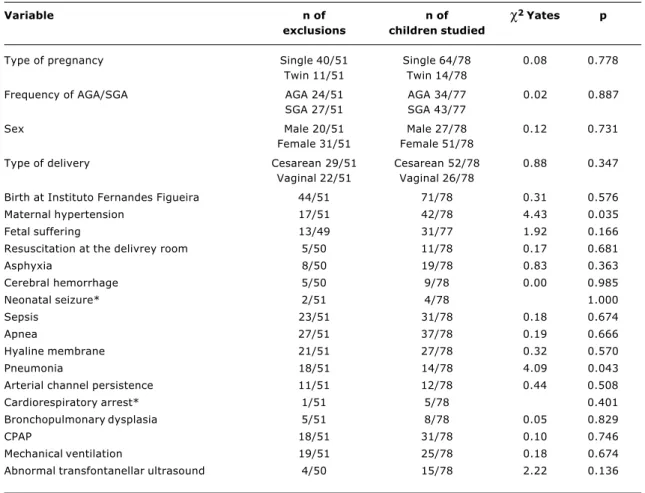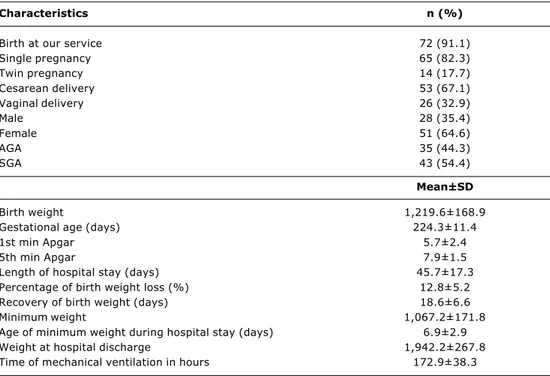J. Pediatr. (Rio J.) vol.80 número6 en v80n6a12
Texto
Imagem




Documentos relacionados
Methods : 47 healthy adolescents between 10 and 19 years old were assessed according to weight, height, body mass index, puberty stage, calcium intake, bone mineral density and
The objective of this study was, therefore, to compare the results of a childhood obesity education program (which could be performed by any health professional) with
Nutrition education performed by means of individual talks with the patient and family, a booklet and with close monitoring of enzyme therapy, high- calorie supplements use
The study undertaken of the milk samples collected at the IFF demonstrates that the energy content of intermediate milk extracted at the time it is to be given to the newborn
In the follow-up of children with gestational ages between 24 and 28 weeks 24 there was a difference in terms of hospitalization rates due to respiratory diseases and in the number
12,13 Hospital do Câncer de São Paulo is a specialty center for the treatment of retinoblastoma in Brazil; with an interdisciplinary team for the proper treatment of this
Seven (1.5%) of those patients suffered from systemic onset juvenile idiopathic arthritis and developed macrophage activation syndrome.. The median age of the juvenile
Currently the examination of choice to confirm the presence of achalasia is esophageal manometry, 7,8 in which increased LES basal pressure will be observed, accompanied by